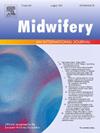“处于边缘,渴望得到指引道路的手”——对女性在潜伏期助产士支持经历的综合分析
IF 2.5
3区 医学
Q1 NURSING
引用次数: 0
摘要
背景:潜伏期住院的妇女接受各种干预措施的风险更高。产妇保健应使产妇能够作出明智的决策,并在整个分娩阶段提供持续的支持。目的综合现有研究资料,探讨产房助产人员对产妇潜伏期支持的体会。方法采用Walsh和Downe概述的综合方法,对定性研究的结果进行细致入微的理解。使用关键词在PubMed、Cinahl、Scopus、Web of science和Psycinfo等数据库中进行检索。纳入2014年以后发表的英文论文,并包含针对研究目的的定性数据。研究结果共纳入9项研究。测试结果被分为三个主题:电话通话——被监听或不监听;视频通话——看到和被看到;面对面会议——试图通过入学考试。妇女可以通过电话、视频通话或访问产房来感到满意或不满意;因此,接触的形式并不是最重要的因素,重要的是助产士如何认识和对待妇女。寻求专业支持的妇女强调需要一种敏感和个性化的方法。助产士——通过电话、视频或亲自——有权决定是否入院。结论本综合研究明确了妊娠晚期和产程活跃期可获得护理的差距,以及助产士在产程病房护理中的重点。本文章由计算机程序翻译,如有差异,请以英文原文为准。
“Being on the edge, longing for the hand that shows the way”- A meta-synthesis of women's experiences of midwife support during the latent phase
Background
Women admitted to hospital during the latent phase are at higher risk of various interventions. Maternity care should enable informed decision-making and provide continuous support throughout the different labour phases.
Aim
To synthesise available research on women's experiences of labour ward midwife support during the latent phase.
Methods
A meta-synthesis as outlined by Walsh and Downe was conducted to generate a nuanced understanding of the findings from qualitative studies. A search using key words was undertaken in the following databases: PubMed, Cinahl, Scopus, Web of science and Psycinfo. Papers were included if published since 2014, in the English language and contained qualitative data addressing the study aim.
Findings
A total of nine studies were included. The result was divided into three themes: Telephone calls - being listened to or not, Video calls - seeing and being seen, In-person meeting – trying to pass the admission test. Women could feel either satisfied or dissatisfied after a phone call, video call, or visit to the labour ward; hence the form of contact was not the most significant factor, but how the midwife met and treated the woman.
Synthesis
Women who sought professional support, emphasized the need for a sensitive and individualized approach. The midwife—via phone, video, or in person—held the authority to decide on admission.
Conclusion
This meta-synthesis clearly highlights the gap in available care between the late stage of pregnancy and the active phase of labour, as well as the focus of midwives in labour ward care.
求助全文
通过发布文献求助,成功后即可免费获取论文全文。
去求助
来源期刊

Midwifery
医学-护理
CiteScore
4.50
自引率
7.40%
发文量
221
审稿时长
13.4 weeks
期刊介绍:
Midwifery publishes the latest peer reviewed international research to inform the safety, quality, outcomes and experiences of pregnancy, birth and maternity care for childbearing women, their babies and families. The journal’s publications support midwives and maternity care providers to explore and develop their knowledge, skills and attitudes informed by best available evidence.
Midwifery provides an international, interdisciplinary forum for the publication, dissemination and discussion of advances in evidence, controversies and current research, and promotes continuing education through publication of systematic and other scholarly reviews and updates. Midwifery articles cover the cultural, clinical, psycho-social, sociological, epidemiological, education, managerial, workforce, organizational and technological areas of practice in preconception, maternal and infant care.
The journal welcomes the highest quality scholarly research that employs rigorous methodology. Midwifery is a leading international journal in midwifery and maternal health with a current impact factor of 1.861 (© Thomson Reuters Journal Citation Reports 2016) and employs a double-blind peer review process.
 求助内容:
求助内容: 应助结果提醒方式:
应助结果提醒方式:


